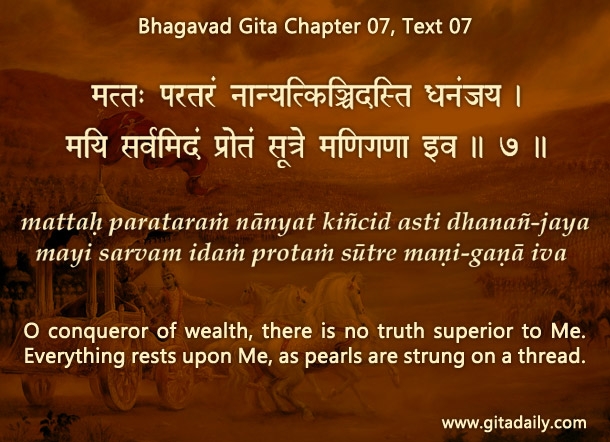The Bhagavad Gita (7.7) states that Krishna is the invisible thread in the necklace of this world. When we are trying to meditate on Krishna, we face a substantially difficult task to direct our attention away from the visible world toward the invisible world wherein, Krishna reigns as the supreme reality. Of course, Krishna is the supreme reality for all worlds, both visible and invisible yet, he is largely invisible to us at our present conditioned state of existence.
Turning our attention away from the visible world can be difficult because of three reasons: the visible world can be active, attractive and addictive. It is active in the sense that things are constantly happening in the world that we encounter with our senses, and these happenings tend to draw our senses toward them. The visible world is also attractive because, many of the things in this world ooze with sensual temptation whereby they don’t just exist out there for us to move toward them but they seem to have a potency by which they intrude into our consciousness and drag it toward them. The visible world can be addictive because many of its objects are doctored either by the divine illusion Maya or by man-made illusion which is also an instrument of Maya. Such doctoring makes us want to enjoy those objects again and again till the craving becomes compulsive, and we end up not just enticed but also entrapped.
In contrast with how active, attractive and addictive the visible world can be, the invisible world can seem to be passive, irrelevant and maybe even non-existent. While none of these attributes actually apply to the invisible world, it may seem that way to our blunt sensory vision. If we don’t want to be deluded into believing what our sensory vision tells us, we need to have our intelligence equipped with what the Bhagavad Gita calls as the jnana-chakshu, the eyes of knowledge (15.11). It is with such intelligence that we can understand the invisible world and specifically the presiding reality of the invisible world, Krishna. He is not just an existence but is actually the supreme existence who contains and sustains all of existence including the visible world that we prize so much.
Similarly, God, far from being irrelevant, is the most relevant because he is the source of our intelligence and our abilities and indeed the source of our life itself, as mentioned in the Bhagavad Gita (7.8-11). Far from being passive, he is the most dynamic because in the invisible spiritual domain, there is a constant reciprocation of love between him and those who are devoted to Him. We all have the opportunity to enter into that world by gradually redirecting our attention from the visible to the invisible.
When we thus understand that the invisible world matters much more than the visible world, we can meditate on our invisible world with greater conviction.
Summary:
- The visible world is difficult to turn away from because it is active, attractive and addictive.
- The invisible world is difficult to turn toward because it can seem to be passive, irrelevant and even non-existent.
- Only when we see with the eyes of knowledge (jnana-chakshu) can we get the intellectual conviction to sustain our meditation on our invisible Lord.
Think it over:
- Why is it difficult to turn away from the visible world?
- How can we realize the importance of the invisible world?
- Describe one feature of the visible world that captivates you and one feature of the invisible world that you can use to redirect your attention toward that world.
07.07 O conqueror of wealth, there is no truth superior to Me. Everything rests upon Me, as pearls are strung on a thread.


Leave A Comment